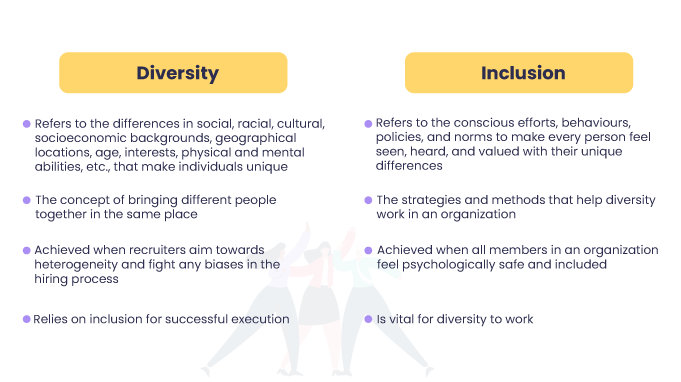Diversity and Inclusion Training: Embrace Differences, Foster Inclusion
In today’s diverse and interconnected world, organizations recognize the importance of creating an inclusive
work environment. They understand that embracing diversity and fostering inclusion leads to improved
collaboration, creativity, and productivity. To achieve this, many companies invest in diversity and inclusion
training programs. These initiatives aim to educate employees about the importance of embracing differences and
create a culture of inclusivity. This article explores the significance of diversity and inclusion training and
how it can positively impact organizations’ success and growth.
The Importance of Diversity and Inclusion Training
Diversity and inclusion training is essential as it helps organizations understand and appreciate the value of
differences among their workforce. It promotes empathy, respect, and equal opportunities for all employees,
regardless of their backgrounds, beliefs, or experiences. With proper training, employees become more
knowledgeable about the challenges faced by individuals from different groups, leading to increased empathy and
understanding.
Benefits of Diversity and Inclusion Training
Effective diversity and inclusion training programs bring various benefits to organizations and their employees.
Firstly, it enhances employee morale and satisfaction. When workers feel included and valued for their unique
contributions, they are more likely to be motivated and engaged in their work. This leads to increased
productivity and reduced turnover rates.
Secondly, diversity and inclusion training fosters innovation and creativity. By creating a safe space for
diverse ideas, perspectives, and experiences, organizations can tap into a broader range of innovative
solutions. Diverse teams bring together different talents, skills, and expertise, leading to more creative and
effective problem-solving.
Thirdly, diversity and inclusion training improve the organization’s reputation and appeal to potential
employees and customers. Companies that demonstrate a commitment to diversity and inclusion are seen as more
progressive and attractive workplaces. This, in turn, helps attract top talent and diverse customer bases,
enhancing the organization‘s competitive advantage in the long term.
Key Components of Diversity and Inclusion Training
To ensure the effectiveness of diversity and inclusion training, several key components should be considered:
Educating on Unconscious Bias: Unconscious biases can lead to unintentional discrimination
and exclusion. Training should focus on raising awareness about these biases and providing strategies to
overcome them.
Developing Cultural Competence: Understanding different cultures and perspectives is
crucial for creating an inclusive environment. Training should provide education on cultural competence,
teaching employees how to work effectively with colleagues from diverse backgrounds.
Promoting Inclusive Leadership: Leadership plays a vital role in fostering an inclusive
culture. Managers and supervisors should receive specialized training to understand the importance of
inclusive leadership and how to create an environment that encourages diverse voices and contributions.
Implementing Policies and Practices: Organizations need to have comprehensive policies and
practices in place to support diversity and inclusion. Training should address these policies, ensuring all
employees are aware of their rights and responsibilities.
Encouraging Open Dialogue: Creating safe spaces for employees to have open and respectful
discussions about diversity and inclusion is crucial. Training programs should encourage dialogue and provide
techniques to navigate difficult conversations.
Measuring the Effectiveness of Diversity and Inclusion Training
To assess the impact of diversity and inclusion training, organizations can consider various evaluation
methods:
Surveys and Feedback: Conducting pre and post-training surveys gathers employees’
perspectives on the effectiveness of the program and their understanding of diversity and inclusion
concepts.
Metrics and Analytics: Tracking diversity-related metrics, such as the demographic makeup of
teams and equality in promotion and advancement, provides valuable insights into the training’s impact on
workplace dynamics.
Employee Engagement: Monitoring employee engagement and satisfaction levels can indicate
whether the training has successfully fostered an inclusive culture.
Inclusion Metrics: Developing inclusion metrics specific to the organization’s goals and
objectives helps track progress and identify areas for improvement.
Conclusion
Diversity and inclusion training is vital for organizations aiming to create an inclusive work environment that
embraces differences. By investing in these training programs, companies can improve employee morale,
productivity, and innovation while enhancing their reputation and attracting top talent. With proper education
and awareness, organizations can foster a culture where everyone feels included, valued, and empowered to
contribute their unique perspectives towards common goals.


